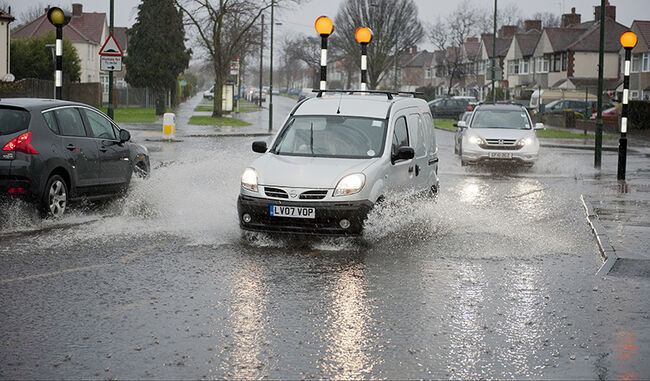Views
What does it mean to be in drought?
Last week, we saw the Environment Agency announce a drought in nine regions of England in response to the unprecedented dry weather and heat that we have seen in recent weeks.
The drought was trigged after a prolonged period of dry weather, leading to dwindling reservoirs and low flow in rivers which has increasingly impacted public water supply and agriculture.
Some droughts take several years to come into effect whereas others, like the one we are currently experiencing, arise from a shorter period of relatively low rainfall over winter followed by an intense period of hot and dry weather. These conditions restrict the ability of water companies to replenish from rivers their water sources - reservoirs and aquifers. It also causes increased demand for water among customers, as they water their gardens and fill up paddling pools in the hotter months.
So, what does it mean for water companies to be in a drought?
In short, the official declaration of a drought tells water companies more or less what they already know – that water resources are under pressure after a prolonged dry period. In truth, water companies will already be implementing their drought plans – which are agreed with government and regulators. It is up to a water company whether to implement a Temporary Use Ban – more commonly known as a hosepipe ban. The declaration of drought does not mean that a hosepipe ban will be brought in or that it is more likely that a water company will declare one.

Water companies invoke drought plans in the event that water supplies at reservoirs, aquifers and abstraction points in rivers begin to run low or when demand for water is exceptionally high. The plans ensure that customer water demand can be met, whilst mitigating the impact on rivers through having to take extra water from rivers when they are at a low level.
In the first instance, drought plans begin with launching consumer awareness campaigns to encourage the public to consider their water use. Following increasing campaign activity as the dry period goes on, hosepipe bans are then implemented. Limiting the use of water in this way generally reduces demand by as much as 10% - or more in some areas.
The official announcement of a drought doesn’t mean that any additional use restrictions will come into force. What is does mean, however, is that ministers, environmental groups, water companies and landowners have formally recognised that there has been a significant climatic impact as a result of a lack of water.
Why is it flooding now?
England has had below average rainfall for ten of the last 12 months. Over this time, the ground has dried out and is almost concrete-like. The effects of the drought can be seen from above.
But now, some places have had thunderstorms and heavy rainfall, and areas are now experiencing surface water flooding – seemingly going from one extreme of no rainwater to the other extreme of too much at once.

One would suspect that the parched landscape should absorb the much-needed rainfall like a sponge. But that is not the case. Intense periods of heavy rainfall landing onto dry land increases the likelihood of surface water flooding as the dry land acts more like hardstanding and is unable to absorb the rainwater at the same rate more moist soils can. This Reading University video shows how soil moisture levels affect the ability of land to absorb rainfall, and in turn how it can affect surface water flood risk.
It is true that we need more rain to help end the drought. But we also need a corresponding increase in soil moisture that comes with more prolonged periods of seasonal rainfall. This will help reduce surface water flood risk and, more broadly, help recharge water sources (like rivers and aquifers) that are under pressure during this dry period.
Increasing long term resilience
We know that climate change is making our weather more extreme, and we can expect drier, hotter summers to become more commonplace in the years to come. Which begs the question, what more must we do to protect the public water supply to more frequent dry periods?
In addition to cutting leakage and developing new water supply options (both of which are progressing), the National Infrastructure Commission recommends that policy intervention to reduce water demand is needed to increase drought resilience in the long term.

Our research has found that the best approach to water demand reduction is a combination of a mandatory water efficiency label for water using products, tied to minimum water efficiency standards, and stronger water efficiency standards (of 100 litres, per person, per day) in Part G of Building Regulations to help futureproof new build homes.
We are pleased that the Government has announced plans to reduce water demand, but it has important gaps. The Government’s promise to introduce a water efficiency label (akin to the energy efficiency label), which will be placed on water-using products, like washing machines, dishwashers, taps and showers, is welcome. However, there are no minimum water efficiency product standards (the kind which has driven a wholesale improvement in energy efficiency) planned.
It is clear that we need to raise the ceiling of our collective ambition to protect the long-term security of the public water supply and the environment on which we rely for it.






